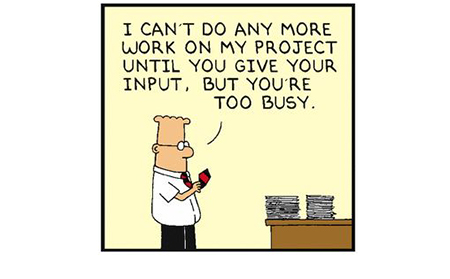Managing Expectations

Now that it’s summertime, we can all relax by the pool and eat ice cream, right? For those who worked hard this spring, it’s a great reprieve. But for those of you hungry for a share of the eCommerce wave during the holiday season, this is the time to start organizing and managing expectations on key projects.
Set high but realistic goals
A common problem in many businesses is trying to take on more projects than can reasonably be handled at one time, or quicker than can realistically done.
Quite often we are asked to pull off miracles and complete projects in super short timelines. Although Camelot has pulled off its fair share of miracles, there are some timelines that are not always achievable.
Managing expectations is a big part of being successful and keeping all stakeholders motivated.

Consider these following scenarios and ask yourself, which project is more likely to succeed on-time with less rework?
- Client A: Hey Camelot, it is November 5th and Black Friday is only 3 weeks away and we need to implement a new eCommerce project that will triple our volume. We’ve never used scanners before but they need to be up and running. Oh, did we also mention we need 4 EDI maps setup and tested with 3 retailer compliant labels? We already promised the client this would happen, so we have to get moving.
- Client B: Hey Camelot, it is July 1st, and Black Friday is 5 months away. We are planning on getting into eCommerce and our client has projected 1500 orders per day, 3000 peak, with 55 SKUs. They would like EDI setup, here are the specs. We also want to use wireless scanning and print compliance labels. They also have a custom packing list, here’s the mock-up. Our plan is to go-live Oct 1st so we have a month of testing under our belt before the holiday rush hits. What other information do we need to provide you in order to be successful with this customer launch? Do we have enough time to commit to this project? Have we communicated enough to manage expectations this key projects.
With those scenarios in mind, what are you supposed to do when your next customer asks about the “standard timeline” to do a certain project?
- Step #1 Review the impacts this project has on the organization. Who is responsible for design, testing, processing in production? Who are the end users that need to be trained on this new functionality?
- Step #2 Acquire all Specifications and Design Requirements. This can be spec design documents, telephone design consultation or in-person design meetings.
- Step #3 Review the Budget. How many resources do you require to achieve a successful resolution? Are there opportunity costs that we need to expectations to manage.
- Step #4 Don’t assume 1 single project has 1 outcome. Be prepared to ask about all scenarios that are applicable, and include within a testing document. Document all testing results with internal staff and your customer to ensure a successful project Go-Live.
- Step #5 Think outside the box and offer ideas of scenarios you’ve dealt with before and ask if they are relevant. Be prepared to think on the fly and troubleshoot if issues arise that were not accounted for.
- Step #6 Establish a reasonable timeline where all parties are available and not stretched to achieve an aggressive Go-Live Date. Aggressive timelines leave little to no room for error. So unless the testing cycles are well established and considered in the project timeline, you run a large risk of component failure upon Go-Live / delivery.
- Point #7: ALWAYS have a Plan B, whether it is manual or otherwise that you feel comfortable will work. Contingency plans are key for any and all scenarios.
If you are planning a project for this holiday season and your project hasn’t been planned by August 1st, then consider yourself behind the 8-ball and at high risk of implementation challenges or failures.
In the wise words of Stinger from Top Gun: “Your ego is writing checks that your body can’t cash”. Do not make promises for other people that you cannot personally guarantee yourself, or have done your own, independent research.
